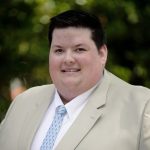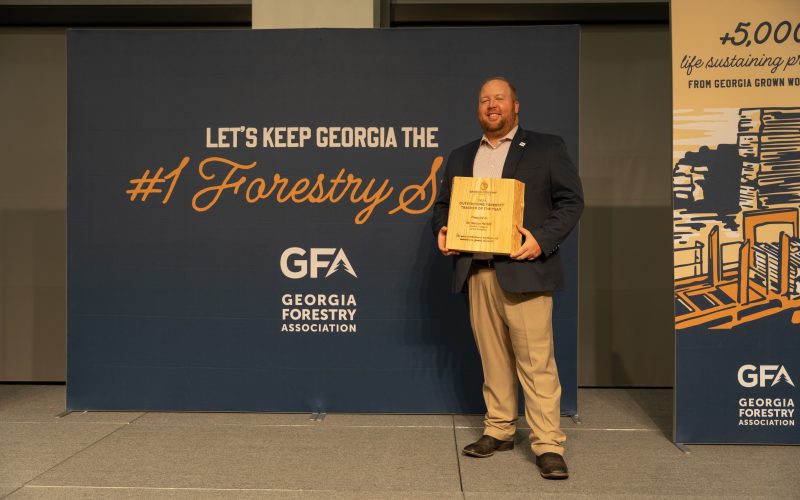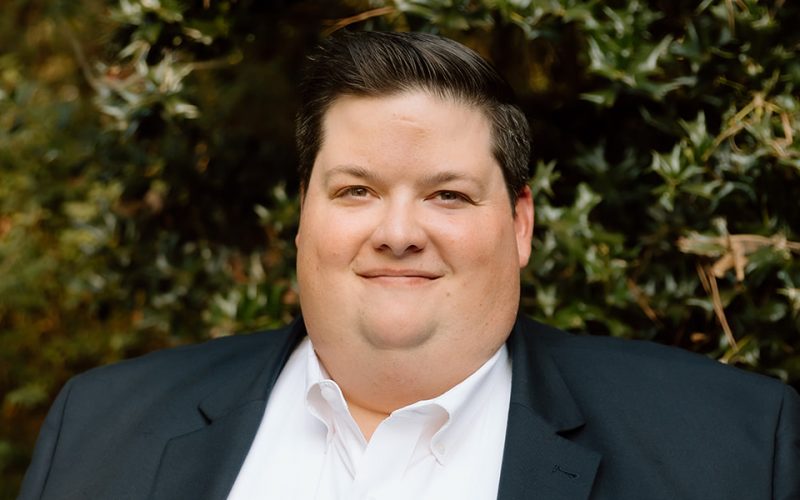Georgia Forestry Foundation Engages with National Partners to Build on Momentum around Markets for Ecosystem Services
The water that comes from our tap is easily taken for granted. For most Americans, water is cheap, its readily available by the turn of a handle, and it is expected. We rarely think about where our water comes from, or the massive amount of work that it took to produce, until there is some type of water quality or quantity crisis. So, communicating about the inextricable connection between the health of our forests and the quality of our drinking water is already an uphill battle, but a critical one.
For generations, private forest owners have been providing a consistent, steady supply of high quality source water for drinking water treatment facilities free of charge, and they are doing a great job. Forests provide an abundant, affordable supply of water by improving aquifer recharge; moderating water flow and reducing soil erosion; and, reducing drinking water treatment and transportation costs. However, as forest landowners continue to facing increasing pressure from urban and suburban development and an ever increasing tax burden those benefits to water become threatened. That is why the Georgia Forestry Foundation is working with a broad coalition of state and national partners to identify ways to attract investment from water utilities and authorities, major water users, and the private sector, to drive value from sustainably managed forests.
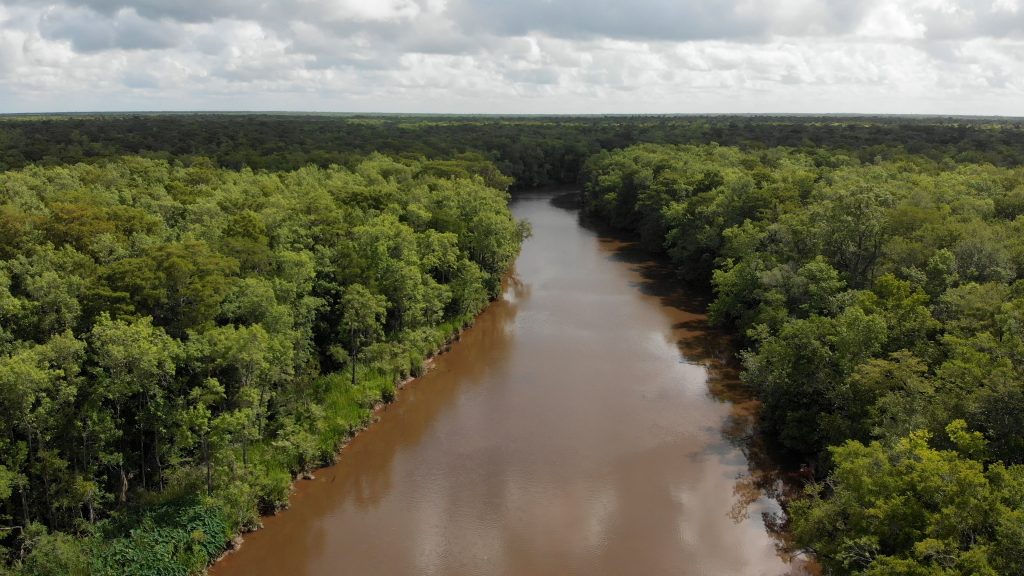
RESEARCH / Understanding and Defining Ecosystem Services Market Opportunities
For more than 20 years, the concept of ecosystem services markets has been evolving. In 2011, GFF funded research through the University of Georgia to quantify the monetary value of ecosystem services provided by Georgia’s 22 million acres of privately owned timberland. This research, along with critical work from the Georgia Forestry Commission and others has established a foundational knowledge of ecosystem services for the entire country.
Today, GFF is supporting work within a broad coalition of national and regional organizations to gain a better understanding of the types of ecosystem service market structures and agreements where landowners can be paid for the clean water services they provide. With funding from the U.S. Endowment for Forestry and Communities, GFF embarked on a multi-phased project earlier this year together with Keeping Forests, a regional partnership of 40 organizations with the common mission to keep forests as forests. The research is conducted by Dovetail Partners, a nationally recognized think tank focused on complex forestry issues.
The research provides a comprehensive review of successful approaches to ecosystem services programs across the country, and it is informed by expert interviews and focus groups within four primary watersheds in Georgia – Upper Oconee, Middle Chattahoochee, Lower Flint and Lower Savannah. Engaging more than 350 individuals in focus groups within each watershed, the research team produced key insights on the effectiveness and cost of various conservation mechanisms, comparing and contrasting land acquisitions, long and short term conservation easements, management agreements.
KEY FINDINGS
- Simplicity: Feedback from landowner focus groups stressed the importance of simple agreements and highlighted the risk of encroaching too much on private property rights by limiting harvests and obstructing land use decisions.
- Collaboration: Program models can lean heavily on a broad group of stakeholders and funding sources to increase scale and impact. Activities must be undertaken and maintained to develop and grow landowner networks and program awareness
- Communications: Successful programs recognize the importance of including other ecosystem service benefits public safety, flood reduction, recreation, scenic beauty, and wildlife habitat. Communicating the value above and beyond water quality partners, audiences, conservation programs, and funders.
- Creativity: Opportunities to attract sustained funding from large corporations could come in the form of green bonds. Investments in green bonds usually come with tax incentives such as tax exemption and tax credits, making them a more attractive investment compared to a comparable taxable bond. Sustained funding would provide the start-up costs necessary to develop a long-term strategy.
“The Foundation’s work to develop a sustainable model for an ecosystem services market in Georgia is rooted in the foundation of supporting the private landowner,” GFF Vice President Nick DiLuzio said. “In order to consider at-scale conservation in these watersheds, we have to present a solution that works for the landowner while driving conservation value back to the water user or water provider. This research is going to provide Georgia, and the entire United States, with guidance on developing successful markets.”
COMMUNICATIONS / Building Momentum Among Stakeholders
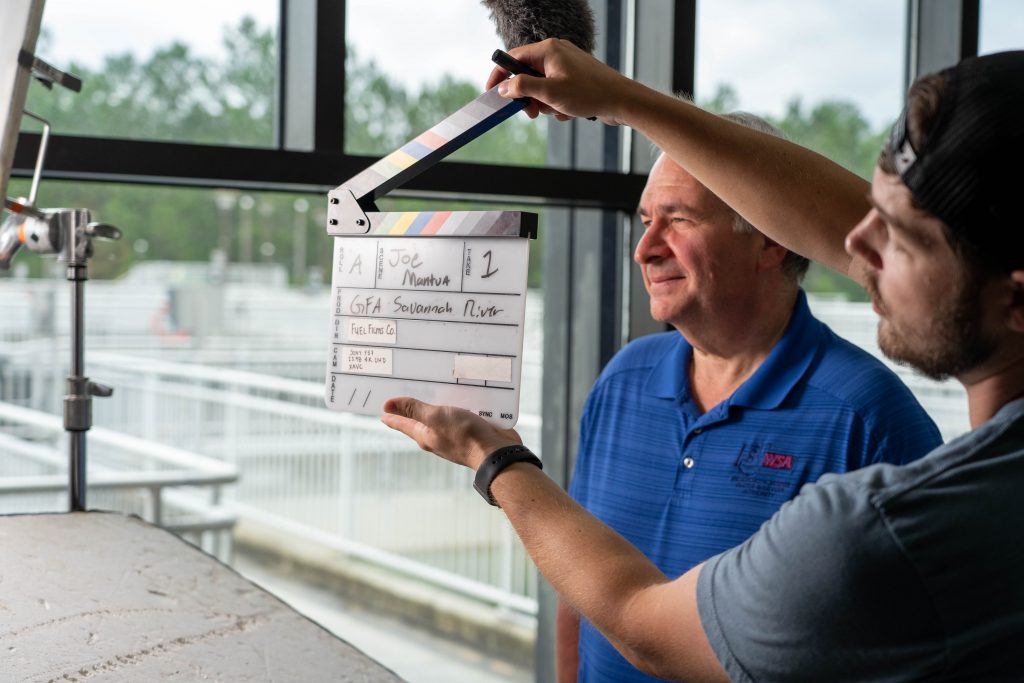
The forestry community has a strong grasp on the benefits of forests to clean and abundant source water supplies, but there is still disconnect with water utilities and the general public. Long term success of market development projects depend on our ability to effectively communicate the value that forests provide to communities across the state in the form of water quality and quantity. GFF is partnering together with Keeping Forests and Georgia-Pacific to produce a short documentary that is focused on highlighting a success story in our own backyard – the Savannah River Clean Water Fund.
The Savannah River Clean Water Fund is an ecosystem services project that includes portions of Georgia and South Carolina along the Savannah River. The program includes a broad group of stakeholders, including five drinking water utilities participating as buyers in efforts to sustain the local forests’ ability to provide water ecosystem service benefits for communities and companies operating in the Savannah River Watershed. Recently, International Paper became the first partner from the private sector to join the list of buyers participating in this Clean Water Fund.
The utilities contributed approximately $585, 000 to enroll 14,165 acres in conservation easements. They also contributed $180,000 towards a direct land purchase and another $50,000 towards landowner outreach and education. The documentary is focused on exploring how the partnership was established, its current challenges and opportunities, and plans for the future. The documentary will be used to raise awareness of source water conservation using ecosystem service markets with water professionals, legislators and key decision makers across the state and the U.S. South through the Keeping Forests network. The documentary is slated to be released this winter.
DID YOU KNOW?
- 65% OF GEORGIA WATERSHEDS or 67,900 miles of perennial and intermittent streams flow through forests
- 5.9 MILLION GEORGIANS or 57% of the state’s population depend on water from forested watersheds
- 70% OF FAMILY FOREST OWNERS IN GEORGIA indicated ‘protecting water resources’ as an important reason for owning forestland
- $264 – $13,442 / ACRE IS THE ESTIMATED ANNUAL VALUE OF ECOSYSTEM SERVICES from Georgia’s privately-owned forests
- URBAN DEVELOPMENT IN GEORGIA INCREASED BY 2.35 MILLION ACRES between 1982 to 2012 (30-years) with the highest land use conversion being from forested land
- GEORGIA’S POPULATION GROWTH IS PROJECTED TO INCREASE 12% this decade, 30% by 2050 and 44% by 2065

